Matador Network's Blog, page 868
May 1, 2020
Oldest campsites in the US
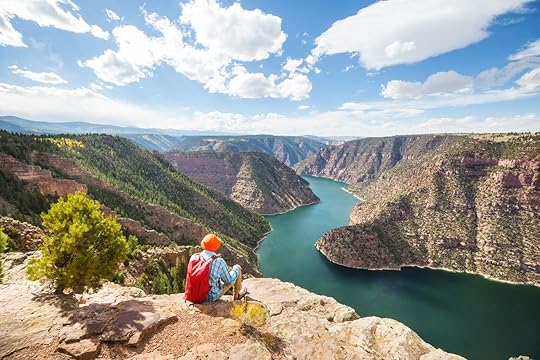
Lest 2020 seem like it will last forever, let’s remember this: The Earth is 4.5 billion years old. You are not old. The milk in your fridge is not old. The Earth? The Earth is old. And this pandemic? It will not last forever. But for now, let’s forget about 2020. Let’s find places in the world that scream of a different era — one overflowing with lava, ancient shallow seas, glacial lakes, and long-gone mountains. Gas up the Delorean — here’s eight places you can camp that throw it way further back than Thursday.
1. McInnis Canyons National Conservation Area, Colorado

Photo: Alberto Loyo/Shutterstock
There’s a place in Colorado (and a tiny section of Utah) that has the second-highest concentration of arches in the world. Here, there are seven distinct red-rock canyons, with the granddaddy of them all measuring 12 miles long and 1,000 feet deep, as well as countless spires, windows, plunge pools, and even, come summer, waterfalls. Golden eagles guard the sky, the Colorado River rushes below, and parts of the landscape date back to the Proterozoic era, some 2,000 million years ago. Welcome to the Black Ridge Canyons Wilderness, part of McInnis Canyons National Conservation Area.
Four hours west of Denver and 15 miles west of Grand Junction, Black Ridge Canyons makes up 117 square miles (out of McInnis’s total of 193 square miles) and offers serious solitude for hikers, backpackers, rafters, and kayakers. You’ll want a high clearance 4WD vehicle to get to the most primitive areas, but sticking to the more accessible spots — like Ruby Canyons, which is great for float trips, Mee Canyons for hiking, and Rattlesnake Canyon for its many arches — still gets you that off-grid feeling.
Here, you’ll find three designated campgrounds: Knowles Canyon Overlook (primitive), Castle Rocks, and Jouflas. Of course, you’re also welcome to camp anywhere that’s more than 100 feet away from any trail or water source.
2. Los Padres National Forest, California
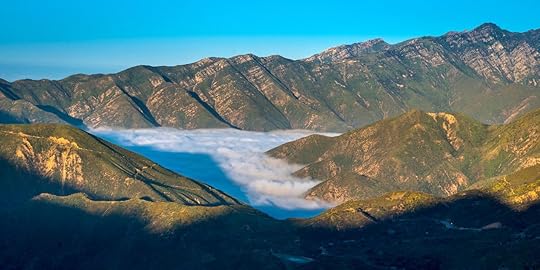
Photo: Joseph Sohm/Shutterstock
Considering Arizona used to be oceanfront property, most of California is pretty fresh. But get toward the Mojave and into Los Padres National Forest, and things change.
Here, the land is old (like 1,700 million years old), and it is huge. Los Padres National Forest covers 1.75 million acres, reaching from Big Sur to just south of Bakersfield. But to go seriously back in time, head toward Mt. Pinos near Frazier Park. The Mt. Pinos and Frazier Mountain trails will take you to the first days of California’s emergence from the sea, and plenty of other peaks and trails light up this area, too. Here, you’ll get all the bang of the Californian wilderness — without the infamous national park crowds.
When it comes to staying overnight, the Mt. Pinos Campground has fantastic views, shaded by Jeffrey pines. The Chuchupate Campground is nearest to Frazier Mountain, and over a dozen other campgrounds can be found in the Mt. Pinos Ranger District. Though, of course, you’re welcome to backcountry camp in the forest, too.
3. Flaming Gorge National Recreation Area, Utah

Photo: Galyna Andrushko/Shutterstock
The red rocks of Flaming Gorge are a 700-million-year-old stunner. Here, you’re deep in the Uinta Mountains, a range that, somehow, runs east-west. A dam turned a stretch of the Green River into a reservoir, and now the gorge’s flooded bottom is a hotspot for boating, fishing, waterskiing, and windsurfing. Back on land, hiking and backpacking reign supreme.
This area is well known for its fossils, and right next door is Dinosaur National Monument. When you imagine this place, though, don’t picture the desert. The Ashley National Forest and its spruce, pine, and aspen quickly take over the red-rock terrain to the south. As for camping, there are 43 campgrounds (and 360 miles of shoreline), so take your pick. What adventure will it be?
4. Isle Royale National Park, Michigan

Photo: Arlene Waller/Shutterstock
With 26,000 visitors a year and land mostly containing water, Isle Royale isn’t your everyday national park. It’s the largest island in Lake Superior, formed as a result of North America almost splitting in two about a billion years ago.
Yep. The Keweenawan Rift failed to split the continent apart, instead exposing, heating up, and doming certain volcanic rocks, including the island of Isle Royale. Lake Superior sits in a basin created by the rift and, helped along by glaciers, along some of the oldest rocks on the continent. Next time someone tells you the Midwest is boring, let them know — gently — that they clearly don’t know what they’re talking about.
You can access the island, and thus the park, via ferry from either Houghton or Copper Harbor, MI, or Grand Portage, MN. Once you’re here, set up shop at one of the island’s 36 campgrounds and do land-based or water-based day trips, or hike along the island’s 45-mile length either inland or along the coast, backpacking your way across the isle. Just make sure you have a permit; they’re free for groups smaller than six.
5. Teton Wilderness, Wyoming
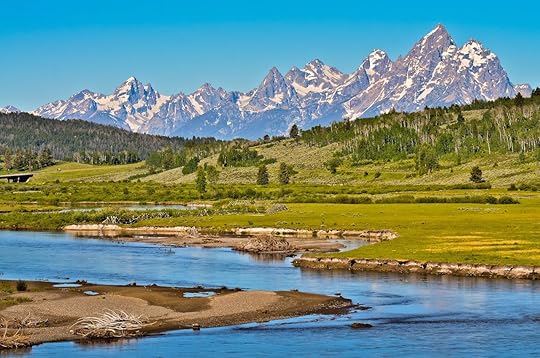
Photo: Chanya Thirawarapan/Shutterstock
Grand Teton National Park has some of the oldest landscapes in the NPS, dating back a mere 2.5 billion years. While you could totally camp there, the wilderness next door has a much better tree-to-human ratio. The Teton Wilderness is part of the Bridger-Teton National Forest, and this section alone has 450 miles of trails throughout its astounding 585,000-plus acres.
When you’re here, be sure to check out Two Oceans Pass, where water from the Two Oceans Creek splits in two, one half heading for the Pacific, one half heading for the Atlantic. Pacific Creek and Sheffield are your designated campground options; both are first-come, first-served.
6. City of Rocks National Reserve, Idaho

Photo: Gestalt Imagery/Shutterstock
Gently rolling sagebrush is the name of the game in south-central Idaho until granite behemoths — peaks, spires, and pinnacles — pop out of nowhere, forming the City of Rocks. To many mountain climbers, it’s just “The City.” There are over 1,000 climbing routes here, each winding up cliffs and walls anywhere from 28 million to 2.5 billion years old.
Smoky Mountain Campground, with 38 sites, is the go-to for most campers and climbers. Though with 22 miles of hiking trails and options for horseback riding, fishing, birding, and epic photography, it’s not just climbers who should take advantage of The City. Note: If you wanna get fancy, check out the Willow Glamping Yurt.
7. Linville Gorge Wilderness, North Carolina
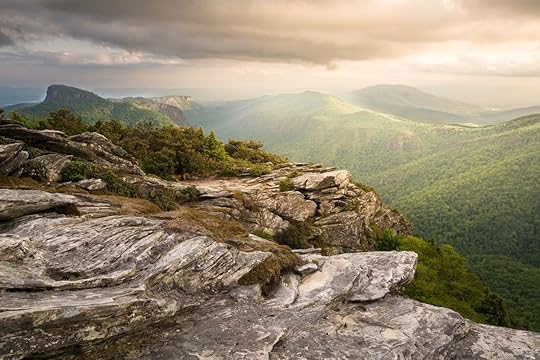
Photo: Serge Skiba/Shutterstock
The Blue Ridge Mountains are the second-oldest in the world, once as sky-high as the Alps, courtesy of a little collision with Africa. Now peaking at around 6,000 feet, they still contain majestic views and landscapes, lush canyons, waterfalls, and forests rolling away from you until they look blue.
The “Grand Canyon of North Carolina,” Linville Gorge — and the stunning Linville Falls and Grandfather Mountain — is a great place to base for any Blue Ridge Trip. The Linville River drops 2,000 feet to the valleys below, hiking trails abound, and the Blue Ridge Parkway makes for a scenic arrival and escape. Camp at the nearby Linville Falls Campground or head out to one of the established individual backcountry campsites on the gorge’s east rim. Both the Hawksbill Mountain trailhead and the Spence Ridge trailhead lead to great spots, though note that a permit is necessary from May through October.
8. Upper Sioux Agency State Park, Minnesota

Photo: Jacob Boomsma/Shutterstock
Brace yourself for the coolest, kitchiest, weirdest, oldest roadside stop on the face of the planet — literally. Minnesota lays claim to the world’s oldest rock at 3.8 billion years old. The designated stop is just a rocky outcropping near Yellow Medicine County Museum, and you can walk right up to it and touch it. It’s free. Go on. Try it. Try to wrap both your fingers and your mind around it.
And while you probably shouldn’t camp right here, know that 10 miles down the Minnesota River is Upper Sioux Agency State Park. You’re still on the oldest bits of the North American craton, the core of the continent, even if there isn’t a sign telling you so. Yellow Medicine River Campground is right on the banks of the eponymous river, and here you can fish for walleye and catfish, spot pelicans and herons, or hike through the forests and bluffs, setting fresh footsteps on truly ancient land. 

More like this: How to pitch a tent like a pro on your first camping trip
The post 8 campsites in landscapes that get you a zillion years away from 2020 appeared first on Matador Network.
April 30, 2020
Flamingos descend on Mumbai

The pandemic has proven to be the age of animal takeovers. As if universally coordinated, wild animals all over the world are seizing the opportunity to make themselves at home in our abandoned cities and towns. In Mumbai, it’s not uncommon to see an influx of flamingos between November and May, but now residents are reporting an unprecedented population boom.
In the absence of humans, flamingos are flocking to the city by the tens of thousands. A new report from the Bombay Natural History Society (BNHS) estimates that the flamingo migration population is 25 percent higher than last year, with around 150,000 flamingos making the journey to Mumbai.
Deepak Apte, director of the BNHS, told the Hindustan Times, “A major reason for the large numbers is also the large flocks of juveniles moving to these sites, following the successful breeding documented two years ago. Additionally, the lockdown is giving these birds peace for roosting, no disturbance in their attempt to obtain food, and overall encouraging habitat.”
In addition to the increased privacy, other factors are making Mumbai particularly hospitable to flamingos this year. Rahul Khot, assistant director of the BNHS, said, “While there is a decline in industrial waste during the lockdown, the influx of domestic sewage is helping the undisturbed formation of planktons, algae and microbenthos formation, which forms the food for flamingos and other wetland birds.”
Unfortunately for humans — but fortunately for the flamingos — people can’t go outside and see the birds in person, so for now, they’re enjoying their remaining weeks as the stewards of Mumbai. 

More like this: In these locked-down cities, animals are taking over the vacant streets
The post Thousands of flamingos are painting Mumbai pink during the lockdown appeared first on Matador Network.
Peruvian foods

Peru, and Lima in particular, has one of the great culinary cultures of South America. There’s so much happening in the country gastronomically, from traditional Incan dishes to exciting new fusions inspired by the many peoples and cultures that make up modern Peru. Take, for example, the innovative Nikkei, or Peruvian-Japanese food, that has influenced restaurants across the Americas. Or just look to the many thought leaders who have called Lima a culinary capital for years, even before the city’s Central Restaurante, the highest-rated South American restaurant on the World’s 50 Best Restaurants list, opened.
Whether you’re looking for a multi-course meal or prefer street stalls and holes-in-the-wall, Peru has you covered. These are the 15 classic Peruvian dishes you don’t want to miss.
1. Ceviche
No list of Peruvian food would be complete without the national dish. Small chunks of raw fish are marinated in lime juice and served up with sweet potato, corn, onion, chiles, and cilantro. While it’s not cooked with heat, the acid in the lime denatures the proteins in the fish and turns it an opaque color similar to how cooking it over heat does. For an authentic ceviche experience, skip the upscale eateries and instead head to Lima’s bustling Central Market, where pop-up cevicherías offer generous bowls of the freshest ceviche in town. A treat for all your senses, you’ll be surrounded by the smells of the fish market and the sights and sounds of the vendors vociferously advertising their dishes.
2. Anticuchos de corazón
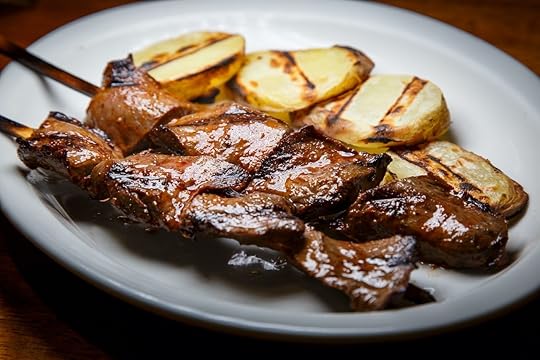
Photo: Aldo Raggio/Shutterstock
These succulent cuts of beef heart are marinated in a blend of spices and grilled on an open fire. The texture and taste is similar to a tender center cut of beef. Just follow your nose to the origin of the grill, which is usually part of a popular street food stand. A modest Lima hole-in-the-wall with a reputation for the best anticuchos in town is Grimanesa Vargas, run by Señora Grimanesa, who’s been making them in Lima for over 40 years. Anticuchos de corazon is a delicious place to start for anyone who is curious about adding more offal to their diet.
3. Paiche
Paiche is a beast of a river fish that’s known as the king of the Amazon. It can grow to more than nine feet in length and 400 pounds, making it one of the largest river fish in the world. It also happens to be delicious, and people along the Amazon have been eating the fish for centuries. The meat is firm with an earthy flavor, and it can stand up to a number of preparations. In Peru, you’ll find paiche grilled, roasted, and served in the country’s famous ceviche.
4. Lomo saltado
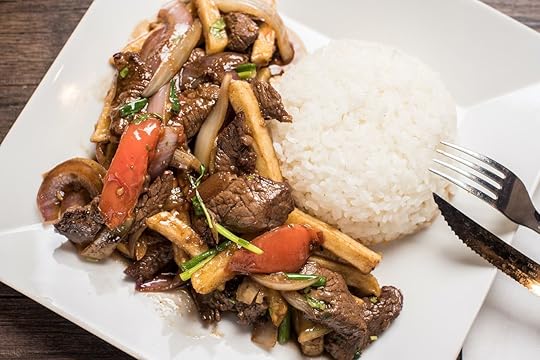
Photo: Joao Kanashiro/Shutterstock
Lomo saltado is essentially a beef stir-fry with a Peruvian twist. This national favorite brings together chunks of tender steak, tomato, onion, and aji amarillo (a flavorsome Peruvian chile) that’s all flash-fried in soy sauce. Rather than served over rice, this stir fry comes with potato or cassava fries and a fried egg on top. The notable Chinese influence in Peruvian cuisine is evident in this dish, and it’s part of the Chinese-Peruvian food tradition known locally as chifa. Lomo saltado is a hearty lunchtime staple on many Peruvian tables. Look for it on cheap menu-of-the-day specials at restaurants across Peru.
5. Adobo de chancho
Peruvians are serious about their stews, with many regional variations and takes that you’ll only find in one area. One you want to keep an eye out for is adobo de chancho, a rich pork stew from the south of Peru. The meat is marinated in chicha de jora, a fermented corn drink that dates back to the Inca. It’s then slow cooked with tomatoes, onions, cumin, chile, and oregano.
6. Alpaca
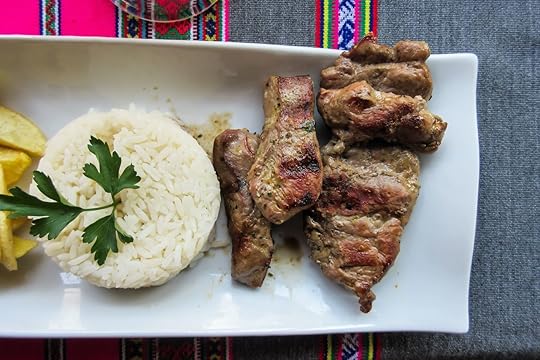
Photo: Mabelin Santos/Shutterstock
A domesticated camelid, alpacas have been bred in South America for centuries for their fleece. They’re also good for eating, and alpaca meat is considered a delicacy in the Andes Mountains region of Peru. Many restaurants in Cusco and the Andes serve alpaca meat that’s usually oven roasted. It’s a lean, flavorsome meat resembling venison. While roasting is the most common, other interpretations include alpaca carpaccio like the one at Cusco’s famous restaurant Cicciolina, which is known for its modern interpretations of traditional Andean cuisine.
7. Pulpo a la parilla
When not prepared correctly, octopus can be tough and chewy. But Peruvians really know what they’re doing with this wriggly sea creature, and they keep it simple. Pulpo a la parilla translates to “octopus on the grill,” and that’s exactly what it is: Fresh octopus from the Pacific Ocean, straight on the grill. The result is tender and full of flavor. What more could you ask for?
8. Causa rellena

Photo: Hans Geel/Shutterstock
Causa rellena is the humble potato served cold. But don’t let that put you off. This interesting take on Peru’s most famous crop (there are more than 4,000 potato varieties in the Andean highlands) is like no potato dish you’ve tried before. The dish is made with smooth mashed yellow potato that’s flavored with lime and layered with avocado, mayonnaise, and chicken or seafood. The result is a surprisingly light and zesty dish, and it’s equally aesthetically pleasing with its delicate and colorful layers. It’s a family favorite that’s often shared as a cold starter before a hot meal.
9. Pachamanca
Pacha means earth and manca means oven in the indigenous Quechuan languages. Dating back to the Inca Empire, this sacred and highly ritualized meal is prepared by layering meat, potatoes, vegetables, and Andean herbs on red hot rocks and then burying the whole thing underground. Think of it as something like an ancient pressure cooker. Once uncovered, the result is tender meat with crispy edges that’s infused with the aromas of the herbs. Today, you can find versions of pachamanca in the cities as well as the mountains.
10. Aji de gallina
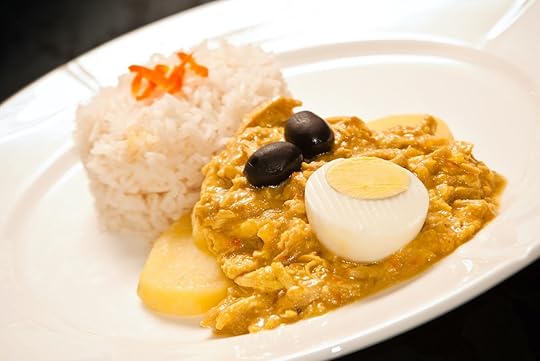
Photo: Daniel Noboa/Shutterstock
Another pillar of Peruvian cuisine, aji de gallina is a slow-cooked shredded chicken dish that’s served in a sauce made with walnuts, milk, cheese and the bold flavor of the aji amarillo chile pepper. The sauce is a vibrant yellow thanks to the chile (aji amarillo means “yellow chili”). The dish is topped with black olives and a boiled egg and is served (like many Peruvian dishes) with rice and potatoes.
11. Choclo con queso
Choclo is a type of corn from Cuzco that was first grown by the Incas and now thrives in Peru’s Sacred Valley. It looks like corn on steroids, with huge white kernels three times the size of your average grocery store corn. A popular preparation is choclo con queso, or choclo with cheese. This popular street food snack is simply hot boiled choclo served with a slap of fresh, salty Andean cheese. It’s a warming and filling snack that’s one of the simple pleasures of life in the Andes.
12. Rocoto relleno

Photo: Christian Vinces/Shutterstock
A regional speciality from Peru’s second-largest city, Arequipa, rocoto relleno is Peru’s version of the stuffed pepper. Rocoto looks like a red bell pepper, but beware as it comes with a spicy kick. The rocoto is stuffed with a mix of minced beef, pork, onions, and pecans, and then is topped with cheese and grilled to perfection. It’s often served with a side of pastel de papa, thin layers of potato and cheese. Overall it’s an immense tour de force for your taste buds, so bring a friend to help you out.
13. Chupe de camarones
Peru has 1,500 miles of Pacific coastline, and incredible seafood is featured on menus across the country. Chupe de camarones is a hearty shrimp chowder that’s a showcase of the ocean’s finest catch and a great warming dish for a chilly evening. Made with shrimp, potatoes, tomatoes, and chiles, the flavors of the ocean are complemented with huacatay, an Andean herb that tastes like a cross between basil and mint.
14. Picarones
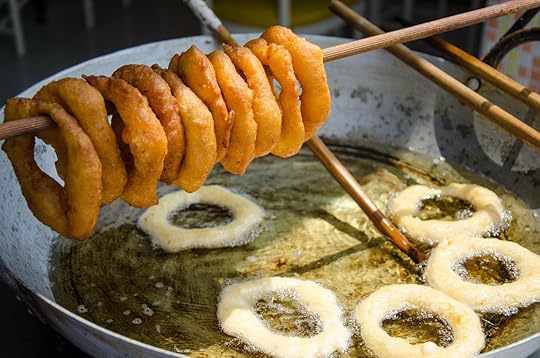
Photo: Peruphotart/Shutterstock
Picarones are to Peru what churros are to Spain. You could easily walk past and mistake them for onion rings, but don’t be fooled. These deep fried doughnut rings are made with flour, mashed sweet potato, and aniseed, and are then bathed in a sweet cinnamon and clove syrup. They’re a late-night favorite after a night of drinking. You’ll find picarones carts around Parque Kennedy in Lima’s trendy Miraflores district, just waiting for the bars to empty.
15.Tacu tacu
Tacu tacu is a comfort dish of rice, beans, and chilis that’s often made with leftovers from the day before. It’s all cooked in a pan to make a crispy outside and soft inside, and it’s typically served in restaurants with a sabana (thin slice) of steak and a fried egg on top. 
A version of this article was previously published on Aug 10, 2017. It was updated by food and drink editor Nickolaus Hines on April 30, 2020.

More like this: 24 reasons you should never travel to Peru
The post 15 Peruvian foods so delicious they’ll blow your mind appeared first on Matador Network.
Trans-Siberian Railway travel tips

At a whopping 6,152 miles between Moscow and Vladivostok, the Trans-Siberian Railroad is the longest single-journey train ride in the world and is a must for the serious train lover. With connections to China, Mongolia, and Japan, the TSR offers plenty of opportunities for broke college students with overstuffed backpacks to find adventure. While there’s plenty of information available online and in guide books, there’s more to traveling by train than knowing how to buy tickets. Read on for insider tips on what snacks to buy and how to avoid the wrath of Russian grandmothers.
Where to start
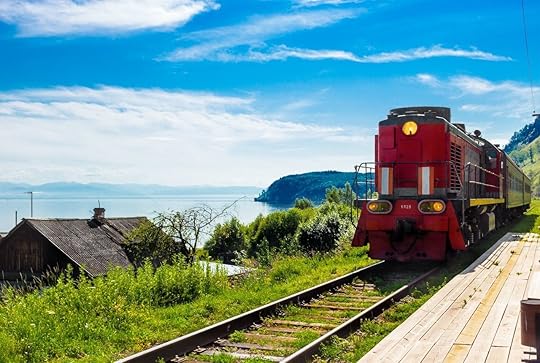
Photo: Al.geba/Shutterstock
Perhaps the most universally helpful resource for planning your trip is the Trans-Siberian Handbook by Bryn Thomas, which has advice on everything from choosing your route to a template for how to translate ticket requests into simple Russian. It’s now in its 10th edition and is available from most major booksellers and online. Another fantastic guide is the Seat61 blog, which offers a wealth of information on the nitty-gritty of train travel: seat selection, meal options, and photos of various sleeper car options.
For booking tickets, you’ll want to head directly to the Russian Railways website, which offers full site translation in English. Create a profile and login (you’ll need your passport number for this) then browse through train and route options.
An important note: Tickets are marked with train number, compartment number, and seat number, as well as your passport number. Make sure all the numbers line up before boarding the train, as multiple trains can depart at roughly the same time to the same destination. You don’t want to be on the wrong track when you realize your actual train is about to leave from the other side of the station.
Food and tea

Photo: alionabirukova/Shutterstock
When it comes to food and tea, Russians don’t mess around. It’s common to see whole picnic spreads on long-haul train rides, complete with dried salami, chocolate, and copious amounts of vodka. Depending on the train you take, you may or may not be able to purchase food on board. Generally, shorter trips (one or two nights between towns) do not include food or a restaurant car, so be sure to stock up ahead of time.
It’s best to visit a local grocery store before leaving (there’s usually one near the station). You’ll want some goodies to share — candy, salami, alcohol, bread, pierogi, the ubiquitous cucumber, tomatoes, prepared food from the deli sections, and dried fruits and nuts are all great options. Don’t forget a few bottles of water as there’s nowhere to buy water on board the train.
Keep some cash on you to buy tea and coffee on the train (served in the mornings and throughout the day by the car attendant).
Where to sleep and how to get around
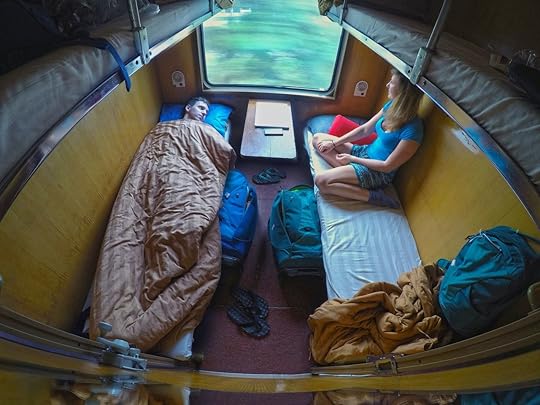
Photo: Flystock/Shutterstock
There are several sleeper car options in Russian trains. Spalny cars are comfortable two-person compartments and are preferred by privacy-loving travelers with a bit of extra cash. Kupe cars are four-person compartments with a sliding door for privacy. These are less expensive than spalny compartments and can be a good option if you’re traveling in a group and want to bunk together. The least expensive and most entertaining option is the platzkart car, which resembles the kupe cars in floor plan but lacks doors.
While kupes are often booked by businessmen and wealthy families, platzkart sleeper cars are frequented by labor workers, students, and young people. In general, they’re rowdier, more interesting, and — ironically — safer, as they provide herd immunity.
Train cars are divided into two bunk tiers: lower and upper. During the day, the lower bunks turn into a table and chairs, which are universally used by everyone in your section (even if they slept on the top bunk). If you prefer privacy or afternoon naps, go for the upper bunk.
What to pack

Photo: Worawee Meepian/Shutterstock
Whether you’re taking the train overnight between cities or committing to the full week-long haul across Siberia, it’s crucial to pack appropriately to avoid boredom, pit stink, and fumbling for your toothbrush before dropping it in the toilet. For entertainment purposes, a deck of cards is both easy to pack and universally entertaining. A small notebook and a pen or pencil are nice for journaling or drawing images when language barriers prove too high to scale. A book or two will help pass the time as you travel Siberia’s vast breadth.
Avoid packing anything too expensive unless you want to keep it on you 24/7. Seasoned travelers keep their passports, cash, and any other documents in a small pouch that’s easy to sleep with and carry with you to the restroom.
For a small cost, you can add bedsheets to your ticket price, which are delivered by the train attendant to your seat. Pack some clothing to sleep in to avoid awkward interactions in the morning. A see-through toiletries bag big enough to hold everything you need will prove immensely helpful when you’re trying to find your face wash without dropping your toothpaste (bonus points if it has something to hang it in the bathroom). You’ll also want to pack train shoes (something easy to slip on and off), as well as a handful of wet wipes and some deodorant.
It’s worth noting that in the older Soviet model trains, the toilet bowl opens directly onto the tracks, so the bathrooms are closed at station stops to avoid travelers doing their business directly onto the rails in front of everyone.
Grandmothers and etiquette

Photo: Serkant Hekimci/Shutterstock
Russian grandmothers are nosy, incredibly generous, and will always tell you what to do. It’s best not to argue. To get your attention, they’ll often call you “young woman” or “young man,” devushka or molodoi chelovek, respectively. When you hear this, it means that you’re either in trouble or that they want to offer you chocolate. It’s up to you to take the gamble.
As far as bathrooms, it’s common sense to not spend too long in them, especially during the morning and evening rush hours.
And do not, under any circumstances, put your shoes on the bed sheets. You will become a social pariah and be firmly scolded by everyone around you. 

More like this: How to spend the perfect summer day in Moscow, Russia
The post Tips and tricks to make the best of your Trans-Siberian train trip appeared first on Matador Network.
Online international souvenir shops

One of the highlights of travel for many is visiting the local market. Whether a locale is known for its unique produce, a rare spice, or a specific craft, traveling to the source to buy that oh-so-coveted item always feels like a truly singular experience. But whether you’re searching for Peru’s prized textiles or West Africa’s best beauty secrets, you may not have to travel at all to get those desirable goods.
Many of the items we assume we’d have to travel around the world for can now be found online. Though you might be worried about authenticity, today many producers of genuine cultural and regional products are also trying a web-based sales strategy, which actually makes the online market less hospitable to dupes and copycats. Now that we have the tools available to bring the world’s heritage right to your doorstep, there’s no reason not to be supporting these cultural legacies even when you can’t go in person. If you’ve never considered purchasing a regional product outside of its habitat, here are a handful to get you started on your search.
1. Mexican huaraches from Cano

Photo: The Cano Shoe/Facebook
The ubiquitous shoe-sandal hybrid, called huaraches, are originally from pre-Colombian Mexico. Although now they’re now popular all over the Americas, this Náhuatl staple is still frequently snagged by tourists from art markets and stalls in central Mexico all the way to the Yucatán. Originally made with a simple leather sole, you’ll find that they are now commonly soled with a variety of materials, a riff that huarache manufacturer Cano takes very seriously.
While maintaining the tradition of hand-woven leathercraft but incorporating a more durable sole, Cano brings you a product that carries the airiness of the traditional Mexican sandal with the durability of a standard oxford. All of their products are handmade in their factory in Mexico where they maintain strict adherence to the three main principles that guide their ethical manufacturing practices: fairness, sustainability, and transparency.
2. West African Batik from Studio 189

Photo: Studio One Eighty Nine/Facebook
As the cult of black girl magic sweeps the globe, people have become increasingly interested in African fashion and particularly that made from traditional African textiles. Batik, a process of creating patterned fabrics with wax, has been utilized in West Africa for hundreds of years. Long sought after by tourists and travelers to the region, these textiles are now making their way into high fashion.
The brainchild of Abrima Erwiah and Rosario Dawson, Studio 189 is one of those rare lines that has earned its cult-like following. Guided by the motto “look good, feel good, and do good,” it adheres to only the highest ethical standards within its entire supply chain. It sources its organic cotton in Burkina Faso, strives to use all-natural dyes like indigo and annatto, and assures that everyone in the entire supply chain is paid a fair wage. Although there’s a wide variety of clothing in the line, its batik might be the most-coveted pieces in the collection.
3. Peruvian Alpaca sweaters from Kuna

Photo: KUNA/Facebook
Long known to modern Peruvians and the Inca people before them, alpaca fleece is the softest, warmest natural fiber in the world. Similar to wool in appearance, this much sought-after material is known as the “fiber of the gods” because of its unique qualities. Alpaca fiber is hollow, resulting in garments that are notoriously warm and lightweight.
The iconic brand Kuna manufactures alpaca fleece clothing and accessories in Peru. It’s a go-to brand among travelers to the area as visitors to the brick and mortar stores are guaranteed to leave with items crafted from genuine alpaca; imitations intended to dupe tourists are prevalent throughout the country. Kuna is also a member of Grupo Inca, a business association that ensures members are operating with integrity regarding its commitments to sustainability and ethics in business.
4. Nigerian Black Soap from Dudu-Osun
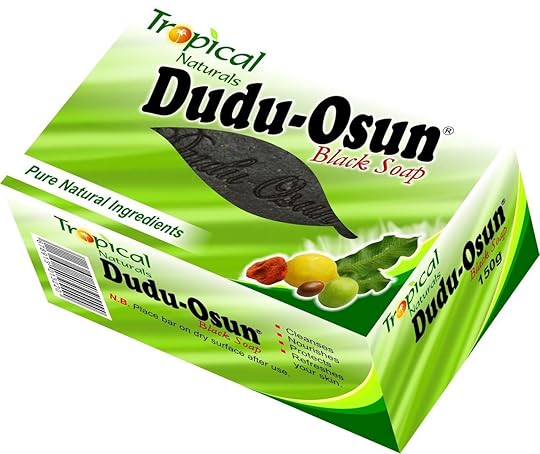
Photo: Dudu-Osun Page/Facebook
There are many different types of black soap, including the pitch-black varieties that you can find on shelves in Western stores, but an aficionado will tell you that you must try the real thing. Genuine black soap is actually dark brown, ranges in texture from crumbly to brittle, and according to every Nigerian Auntie ever is the absolute best soap for all different types of skin.
One of the most popular brands in Nigeria, Dudu-Osun, is now available online, so there’s no need to travel to Ibadan to get it, and your purchase helps communities in Nigeria even if you don’t buy it locally. CEO Abiola Ogunrinde is committed to using some of the profits toward such community projects as building schools and libraries and providing health care for those who need it
5. Navajo jewelry from Navajo Arts and Crafts Enterprise

Photo: Navajo Arts and Crafts Enterprise/Facebook
Long the object of admiration, Navajo arts, crafts, and design has been stolen and copied since the very first colonizers came across the culture. This ongoing dynamic makes it even more important to take the time to source authentic Navajo items should you choose to purchase them.
At the all-indigenous-owned Navajo Arts and Crafts Enterprise, you can be assured you’re receiving an authentic product even if you’re not buying them in person on the reservation. Though there is a storefront in Arizona that you can visit if you’re planning on being nearby, you can easily shop the selection online. It carries the brand’s signature jewelry, but there’s also myriad other unique items ranging from clothing to footwear to literature.
6. Korean Volcanic Rock Skin Care from Innisfree
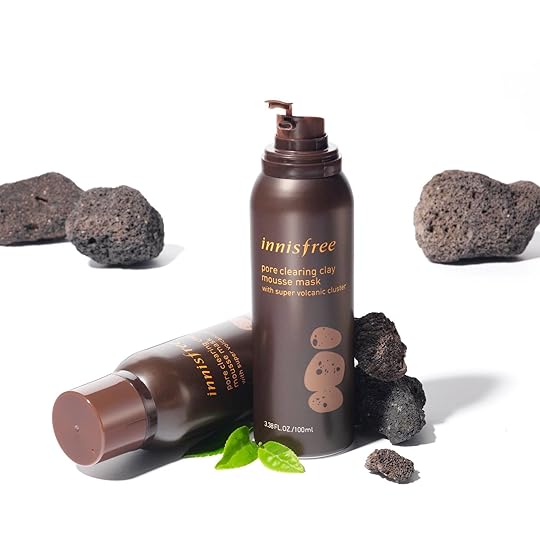
Photo: Innisfree/Facebook
Korean skincare is now famous all over the world, and while many have their own personal preferences, maybe the item most treasured and unique to South Korea are those made from black volcanic rock. Harvested from Jeju Island, the rocks are ground and added to a number of luxury skincare products from facial scrubs to facial cleansers.
Thankfully these products are popular enough that you can get them online. Though many different brands utilize this particular ground rock, maybe the most popular is Innisfree. If you don’t know which product to try first, you can’t go wrong with the Pore Clearing Clay Mask. While scrubs can irritate those with sensitive skin, this mask will gently pull out impurities and oil without leaving the skin irritated or inflamed.
7. Morrocan Rugs from Anou

Photo: The Anou/Facebook
If you’ve ever tried to purchase a hand-made rug — or anything — from the souks in Morocco, you’ll know how difficult it can be to shop in peace. From being constantly hounded by shopkeepers to being subject to the hyperinflated prices reserved for tourists, this may be the item on this list that is best left to purchase from the comfort of your own home.
Anou can help you get an authentic Moroccan rug at a reasonable price without being hassled by an overly loquacious salesman. It has many different varieties from different cities, all made by different craftspeople. You’ll also find other textiles here, too, like handwoven fabrics and blankets.
8. Belizean Hot Sauce from Marie Sharp’s

Photo: Marie Sharp’s Fine Foods Ltd/Facebook
The oddball among Central American countries, Belize is the English-speaking, multi-ethnic home to its most iconic product: Marie Sharp’s hot sauce. Though there are many different kinds, a few of them stand out for their uniqueness — possibly the most coveted flavor is the Grapefruit Pulp Habanero Pepper Sauce. This is the one that travelers to the area are most known to bring home with them.
These pepper sauces were originally made by the actual Marie Sharp beginning back in 1980. She devised her recipes from fruits and peppers that grew on her own farm, and to this day the company maintains this responsibility of using all-natural, local ingredients. You can buy them individually or in a variety pack directly from their site, and for those of you who can’t bear to leave home without it, they have a 1.6 oz size you can tuck in your purse.
9. Japanese Kimono from Market Sakura

Photo: Kimono Yukata market sakura/Facebook
Though the word has now been used around the globe to refer to a number of different robe-like garments, an authentic Japanese kimono — or its lightweight cousin, the yukata — is constructed in strict adherence to a very specific code. The type of fabrics, patterns, designs, and accessories that accompany kimono are monitored very strictly.
While inside Japan it is far less common, those looking to buy an authentic kimono online risk being duped with a fake product. The less familiar you are with traditional kimono, the more susceptible you are to being sold a fake. Fortunately, all of the kimono, yukata, haori, and all of the accessories you find at Market Sakura are 100 percent authentic. You can be sure that anything you find on the site is genuine, so feel free to pick out any that strike your fancy.
10. French Green Montmorillonite Clay from Aromatics International

Photo: JPC-PROD/Shutterstock
Originally discovered in the town of Montmorillon, France, this light-green clay was an immediate favorite of French women who swear by it for its supposed benefits to skin. While there are many different preparations, the most prized are those made from extremely finely ground sun-dried clay mixed with spring water to create a toxin-removing facial or decollete mask.
By purchasing montmorillonite clay from Aromatics International, not only are you sure to get one of the most finely ground products on the market but also one that adheres to a high ethical standard. It’ll ensure that the product you receive was harvested in the appropriate region in France, that it is strictly pure, and has been produced only with the most sustainable practices.
11. American Vintage from Knee Deep Vintage

Photo: Knee Deep Vintage/Facebook
While secondhand and thrift stores are popular all over the world, one country is known for having the best vintage clothing: the United States. While the nature of the product makes it difficult to buy online being that items are generally one of a kind, Knee Deep Vintage has been carefully honing its online game since it opened its storefront in 2008.
Because its offerings are curated so beautifully, you don’t have to worry about an item you buy online being damaged. Its clothing and accessories are always in excellent condition, or else they’ll let you know. To see the current selection, check out the stories on its Instagram page: items are always listed with measurements, so you can tell if it will fit. If you see something you like, simply send them a DM to arrange for them to ship it to you. Payments can be made via PayPal.
12. Italian olive oil from Olio Roi

Photo: Olio Roi/Facebook
Maybe second to the hundreds of varieties of wine, Italian olive oil might be the next most popular item that visitors return home with after vacationing in Italy, and with good reason. Italy has been producing some of the world’s best olives for thousands of years, so it only stands to reason that it’s carefully developed the best ways to process them as well.
If you can’t make it to Europe to pick out your own favorite, Olio Roi is an excellent resource to find fine Italian olive oils that can be shipped to your door. Whether you prefer a simple, exquisitely crafted extra virgin olive oil or its herbal-infused cousin, Roi oils are made according to only the most strict traditions, resulting in a truly superior product. 

More like this: Support women artisans in Mumbai on these incredible eco-fashion walking tours
The post Shopping in markets is one of the cultural highlights of travel. Here’s how you can do it online. appeared first on Matador Network.
‘The Big Flower Fight’ is next TGBBO

The British have a special knack for taking seemingly innocuous activities and turning them into stressful, high stakes competitions that are simultaneously soothing and uplifting. The best example is, of course, The Great British Bake Off, the show about cake that actually made everyone who watched it alternately sob and cheer for the contestants. What made the show so good is that even though it was supposed to be a competition, all the contestants were supportive friends who truly cared about each other. It was so pure, so full of love, that you couldn’t help but be drawn in. It seemed as though there was nothing else like the The Great British Bake Off on television, but a competition all about flower arranging called the The Big Flower Fight might strike the same perfect balance.
Now, I know, flower arranging doesn’t exactly sound like the height of drama, but honestly neither did baking cakes and we ended up loving that. The premise of the show sounds so wholesome: ten pairs of amateur gardening enthusiasts (the bakers on The Great British Bake Off weren’t professionals either) come together to create “large scale flower installations” according to a press release from Netflix, where the show will air. The prize is a chance to display their own flower sculpture at Kew Gardens, in London. The stakes are high, and hopefully the gardeners can create the same tension with flowers that the bakers did with cake.
British comedians Vic Reeves and Natasia Demetriou (who is also the star of the television adaption of What We Do in the Shadows) will host the show while master gardener Kristen Griffith-VanderYacht will serve as the judge. That’s another commonality shared with The Great British Bake Off: Comedians take on the hosting duties while experts do all the judging, but only time will tell if Griffith-VanderYacht will become as beloved as Mary Berry and Paul Hollywood (okay, to be fair, Paul Hollywood is as much despised as he is loved).
The eight-episode series of The Big Flower Fight premieres on Netflix on May 18, and then we’ll see which respectable activity reigns supreme in our hearts: baking cakes or arranging flowers. 

More like this: Anthony Bourdain and Carrie Fisher feature in Netflix documentary on taking psychedelics
The post This flower arranging competition could be the next ‘Great British Bake Off’ appeared first on Matador Network.
What is egg coffee

Dalgona coffee might have become a viral TikTok trend, but its origins run much deeper than that. The creamy whipped coffee drink is actually a product of Asia (it’s especially popular in India and South Korea) but only recently gained popularity in the United States after catching the eye of a few influencers and celebrities. Its successor is egg coffee, a mainstay of cafes in Japan, Vietnam, and Korea.
There are many variations of egg coffee throughout Asia. In Korea, for instance, a drink known as “morning coffee” involves stirring a raw egg yolk, seasoned with salt and sesame oil, into a cup of black coffee. According to the Korea Herald, the drink, served at a dabang, a traditional Korean coffee shop, reached peak popularity in the 1960s and ‘70s, but isn’t widely consumed anymore.
Modern versions of this drink don’t require cracking an egg in your morning Joe. It can also be a frothy, creamy concoction that uses the egg yolk to create a meringue-like topping that floats on top of the coffee. Eater points out that the egg acts like a thickener that adds foam similar to how milk does to a cup of coffee in the West.
Egg coffee might remind you of another coffee trend from several years back called bulletproof coffee, which encouraged adding butter to your coffee as a way to enrich the flavor and energize the drinker. That too originated in Asia; it’s a riff on so-called butter tea, a drink from Bhutan and Tibet that mixes milk, butter (sometimes yak butter), tea leaves, and salt.
In Vietnam, egg coffee is called cà phê trứng and it sounds like a delight. To make it, you whisk together a raw egg yolk with condensed milk until the egg is light and airy, then pour it over a cup of rich, strong, dark-brewed Vietnamese coffee.
As Vice reported back in 2015, Tri Hoa Nguyen, owner of Café Giang in Hanoi, is the mastermind behind the original Vietnamese egg coffee. This sweet and slightly bitter drink might be unusual for Western tastes, but in Asia it’s a staple, and one very much worth integrating into your morning coffee routine. 

More like this: The true origin of the internet-famous dalgona coffee
The post appeared first on Matador Network.
Lund drops chicken manure in square

Up until now, Sweden has resisted a large-scale national lockdown, and is largely leaving social distancing up to the common sense of its citizens. But as the country is getting ready to celebrate Walpurgis Night (a traditional holiday celebrated in northern Europe) tonight, officials are concerned about the potential consequences of the festivities on the community’s health.
Fearful that residents will try congregating for traditional holiday celebrations, the university town of Lund is taking extreme measures. It’s planning to dump over 2,000 lbs of chicken manure in the town’s central park.
Gustav Lundblad, chairman of the local council’s environment committee, told the Sydsvenskan newspaper, “We get the opportunity to fertilize the lawns, and at the same time it will stink and so it may not be so nice to sit and drink beer in the park. I am not a fertilizer expert, but as I understand it, it is clear that it might smell a bit outside the park as well.”
He continued, “These are chicken droppings, after all. I cannot guarantee that the rest of the city will be odorless. But the point is to keep people out of the city park.”
The holiday is generally celebrated with parties and bonfires. Although Sweden has banned planned gatherings exceeding 50 people, because the Walpurgis Night festivities are classified as “spontaneous,” they can’t be outright banned by authorities.
“Given that we have a situation where Lund could very well become some kind of epicenter for the spread of infection during on the last night of April, I think as chairman of the Environment Committee that it was a good initiative,” said Lundblad. 

More like this: Lund is Sweden’s coolest university town
The post Swedish city dumps chicken manure in a local park to discourage holiday celebrations appeared first on Matador Network.
Pets social distancing guidelines

By now, we have a pretty good idea how to interact with other humans during the COVID-19 pandemic. Wear a mask, stay six feet apart, don’t shake hands — you know the drill. When it comes to pets, however, it’s been a bit of a gray area. Now the Centers for Disease Control and Prevention (CDC) has released official guidelines for how you should interact with household animals, and how they should interact with each other.
According to the guidelines, there is no evidence that animals are playing a significant role in the virus’ spread, but because there have been cases of pets and zoo animals contaminated by the virus, it’s still advised to take extra precautions. The CDC recommends to “not let pets interact with people or animals outside the household. If a person inside the household becomes sick, isolate that person from everyone else, including pets.”
This means keeping cats indoors whenever possible, and walking dogs on a leash to keep them six feet away from other animals and people. The guidelines also suggest avoiding dog parks and other crowded public areas.
In the event that you’ve tested positive for COVID-19, you should avoid contact with pets, even your own. The CDC suggests having another household member care for your pets while you’re sick, and to refrain from any “petting, snuggling, being kissed or licked, and sharing food and bedding.” And if you must care for your pet while sick, “wear a cloth face covering and wash your hands before and after you interact with them.”
Although the virus mainly spreads from person to person, and animals aren’t considered a major transmission threat, the CDC said “it appears that it can spread from people to animals in some situations,” so it’s best to err on the side of caution. 

More like this: Everything you need to know about your rights for flying with pets
The post CDC releases new social distancing rules for household pets appeared first on Matador Network.
Beijing flight bookings surge

If China is modeling how the rest of the travel industry will bounce back from the virus, recent travel data is encouraging. Since Beijing relaxed its coronavirus rules yesterday, data from online reservation service Qunar showed that flight bookings out of the Chinese capital have increased by up to 15 times.
Previously, Beijing had required incoming visitors to self-quarantine for 14 days upon arrival. Now that requirement is being relaxed for travelers coming from low-risk areas of the country. With a five-day Labor Day holiday beginning on Friday, China is poised to see its first major tourism spike in several months.
Zheng Liun, a Beijing office worker, was eager to travel to the southwestern city of Chengdu to see the pandas. According to Reuters, Liun said, “It finally happened. I quickly bought a couple of air tickets for Chengu leaving in two days. I’ve always wanted to see the pandas.”
In addition to the leap in air travel bookings, Qunar’s data also showed a quadrupling of searches for various other travel logistics, including hotels. Fliggy, a travel booking platform, saw flight demand to and from Beijing increase by over 500 percent just an hour after restrictions were lifted.
The tourism industry is encouraging a return to travel by introducing a variety of discounts, though some trip booking sites are limiting guests to 30 percent of normal capacity to discourage large crowds. 

More like this: How to visit the 7 most beautiful temples in Beijing
The post In Beijing, flight bookings surge by 15 times as restrictions relax appeared first on Matador Network.
Matador Network's Blog
- Matador Network's profile
- 6 followers



